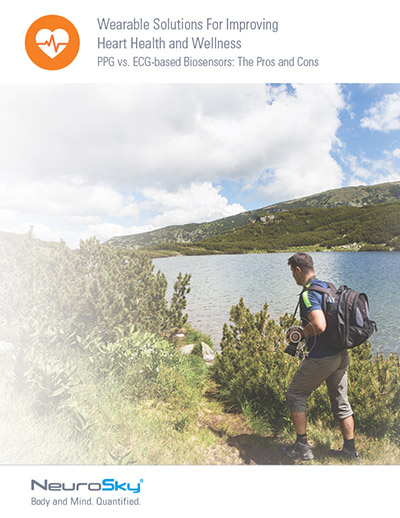Not long ago, tracking heart rate variability (HRV) was considered to be an incredibly difficult task, relegated to doctor’s offices and other controlled training facilities. That has all changed with the rise of wearables and other precise tracking devices enabled by ECG biosensors. In this post, we’re going to provide a better understanding of just how beneficial tracking HRV can be to the average person, and why wearable and mobile device manufacturers should be paying close attention to this emerging trend.
Specific Data for the Average Person
When embedded in a wearable device, ECG biosensors can provide any user with a wealth of data based on the tracking of their heart rate variability. This data can be used to provide actionable information, which in turn can help the user understand how their body is feeling. Being more in-tune with their body can only serve to benefit the wearer’s health.
Stay Ahead of Stress
Stress is a common factor in all of our lives. Simply put, stress is the body reacting to a change that requires a response. Stress can be healthy, acting as an alarm system to tell the body to take action; however, if stress levels are too high and not properly dealt with, they can result in serious interruptions to wellbeing, including headaches, insomnia, depression, high blood pressure, and more.
As you can imagine, letting stress levels get out of control can set a user on the wrong path. If they’re stressed, their mood is going to be affected. If they’re in a bad mood, they may find that they feel fatigued and lethargic. This feeling in turn can make it seem like they don’t have the energy to change their mood. It can be a slippery slope.
Monitoring stress levels by tracking HRV can help wearable and mobile device users become more aware of these symptoms so they can better combat them. For example, tracking heart rate variability can help a user have a better understanding of what raises their stress levels, so they can avoid or prepare for those situations in advance.
Fitter, Happier, More Productive
As a user tracks their HRV with an ECG-enabled wearable device, they will begin to see patterns of when HRV may be low or high. This allows them to better plan their days in order to increase their productivity. A great example of this would be if the user is a regular gym goer who plans their daily programs in advance. If they’re going into the day with low heart rate variability, they’ll know they need to rest, relax and let their body recover. With that in mind, they can adjust their plans to do a less intensive training program for that day. This way, they will still get their workout, but it won’t feel like a chore, and afterwards they’ll be better able to get their heart rate variability back to optimal levels.
Heart rate variability is more than just a number—it’s an important insight on how the health of the average person’s body and mind are affected by the world around them. For more information on why the average person should track their HRV, and why wearable and mobile device manufacturers should be paying attention to the insights it provides, be sure to download the free whitepaper, Wearable Solutions For Improving Heart Health and Wellness.



